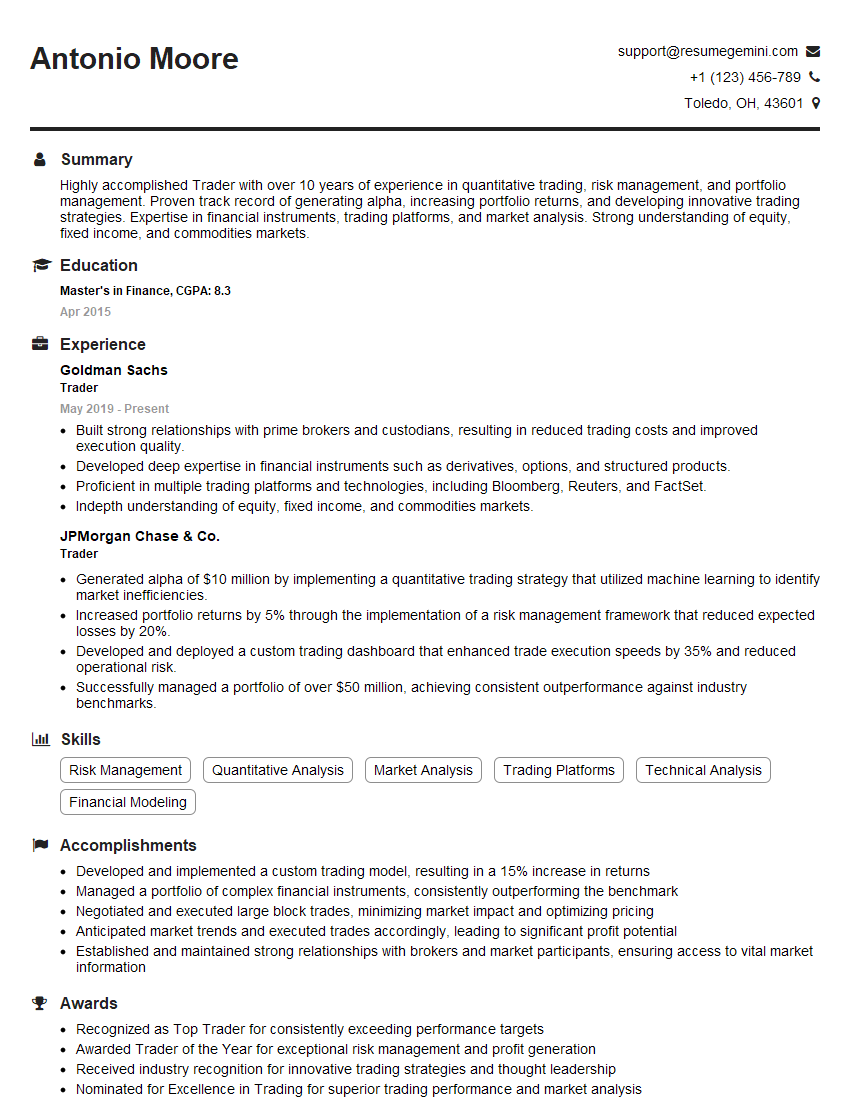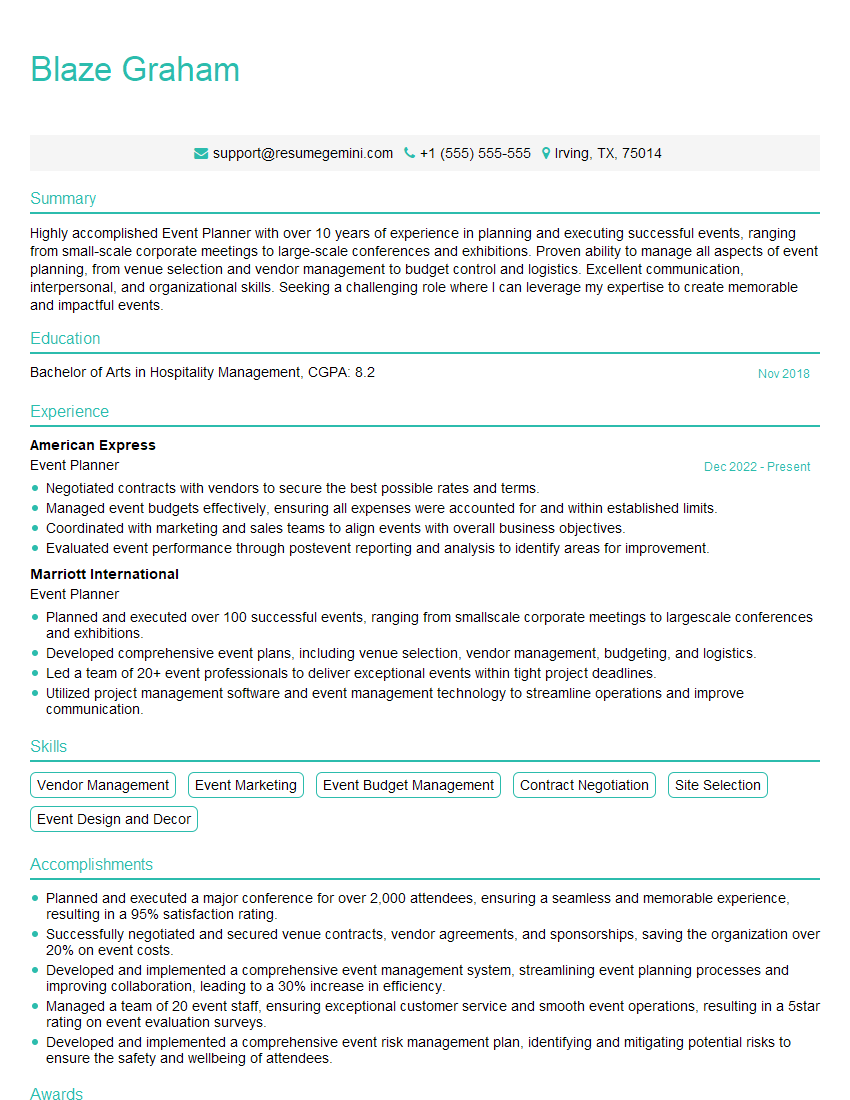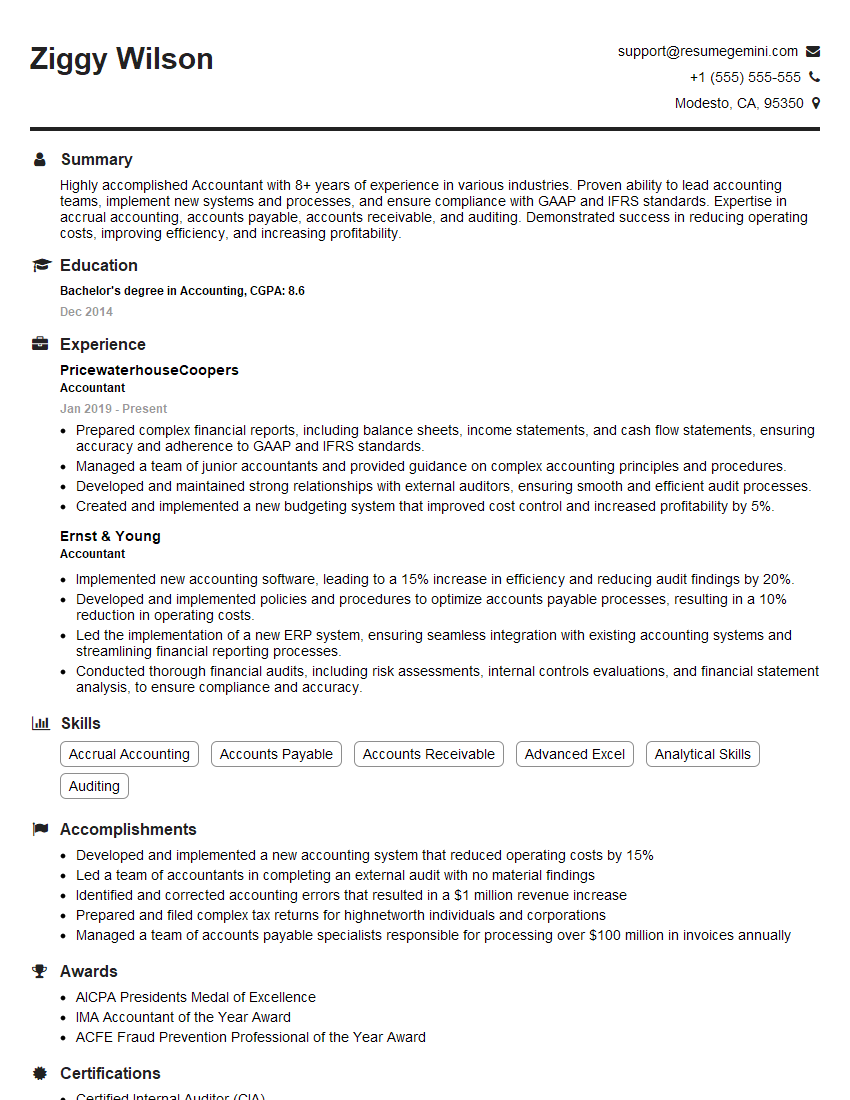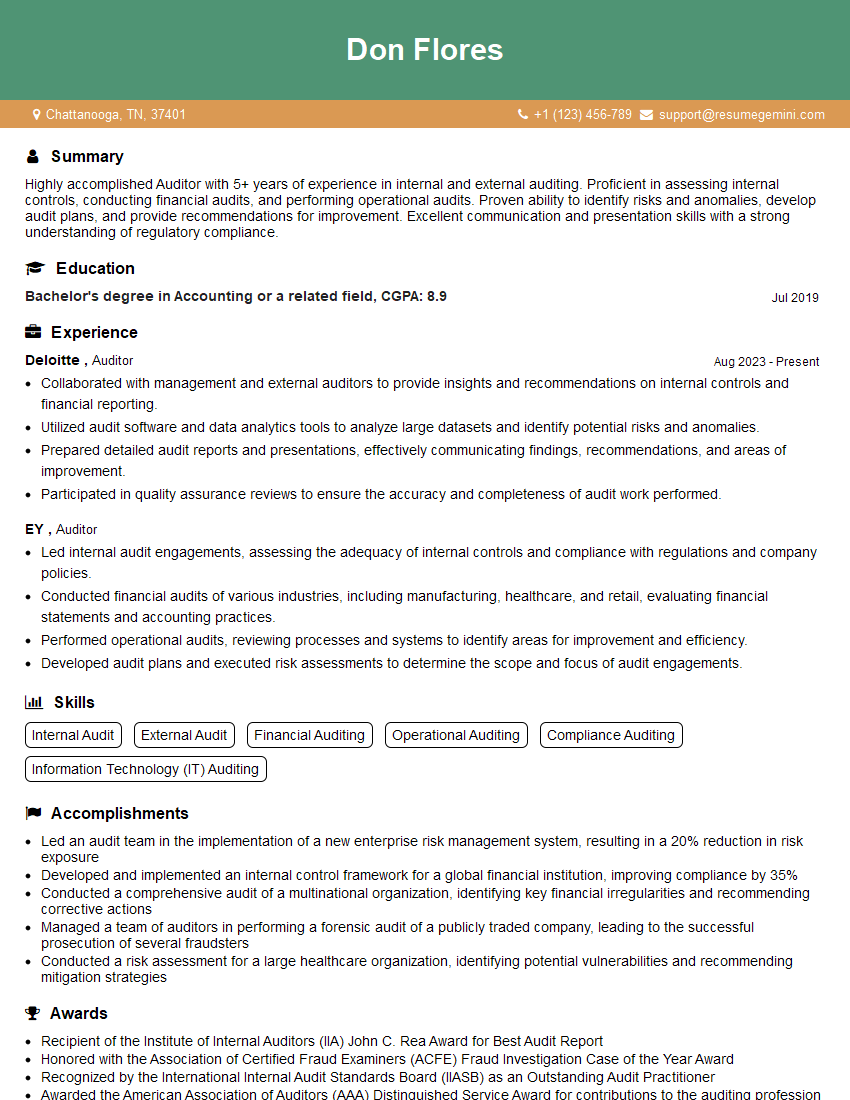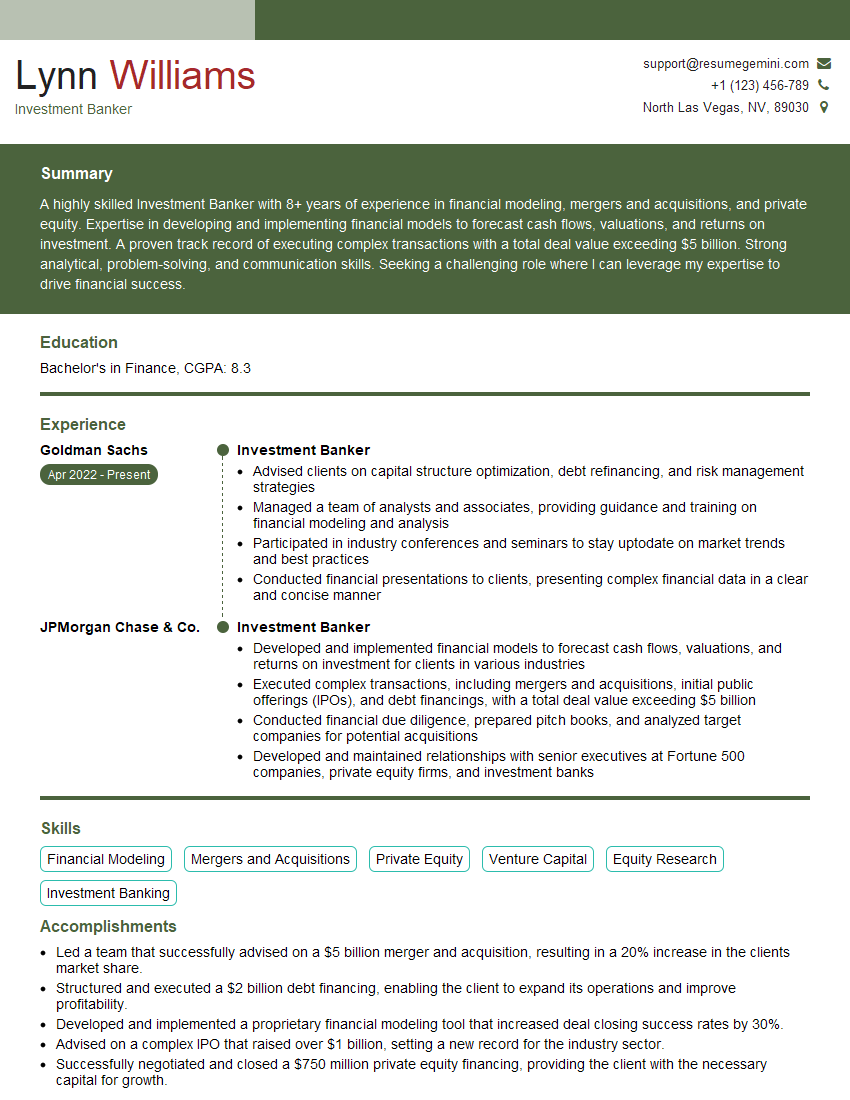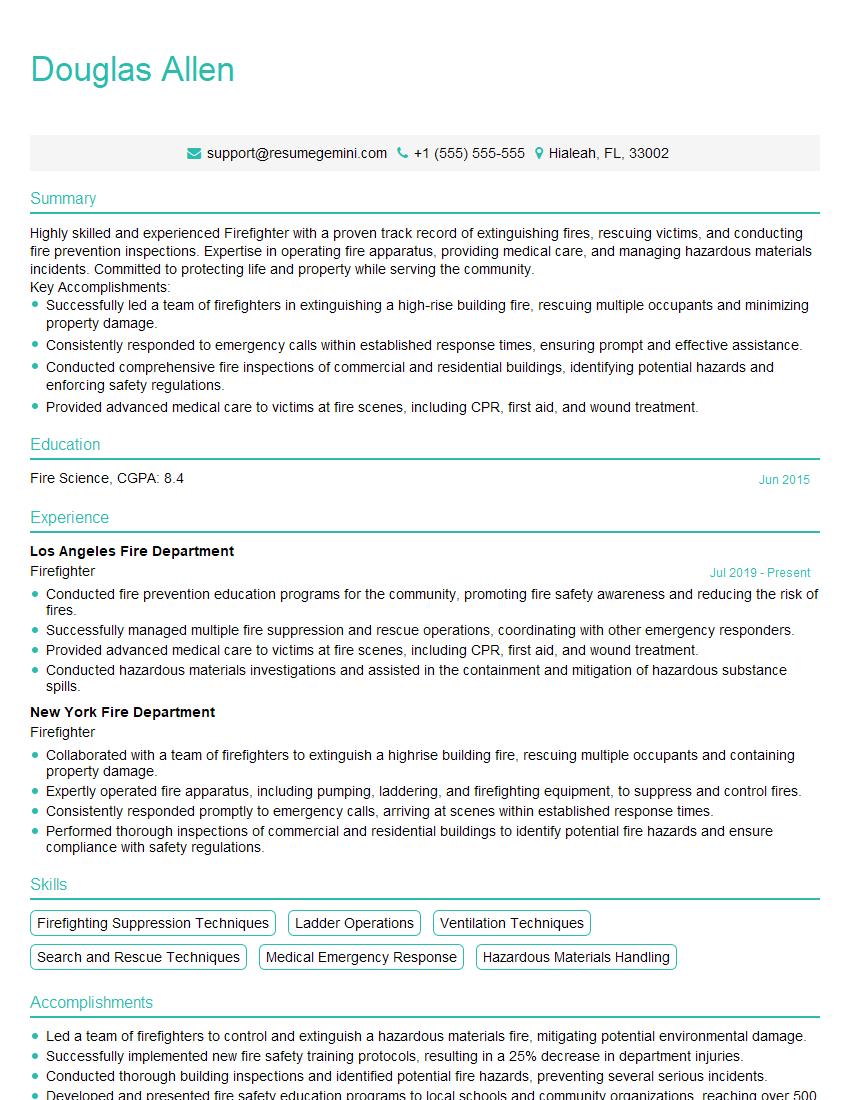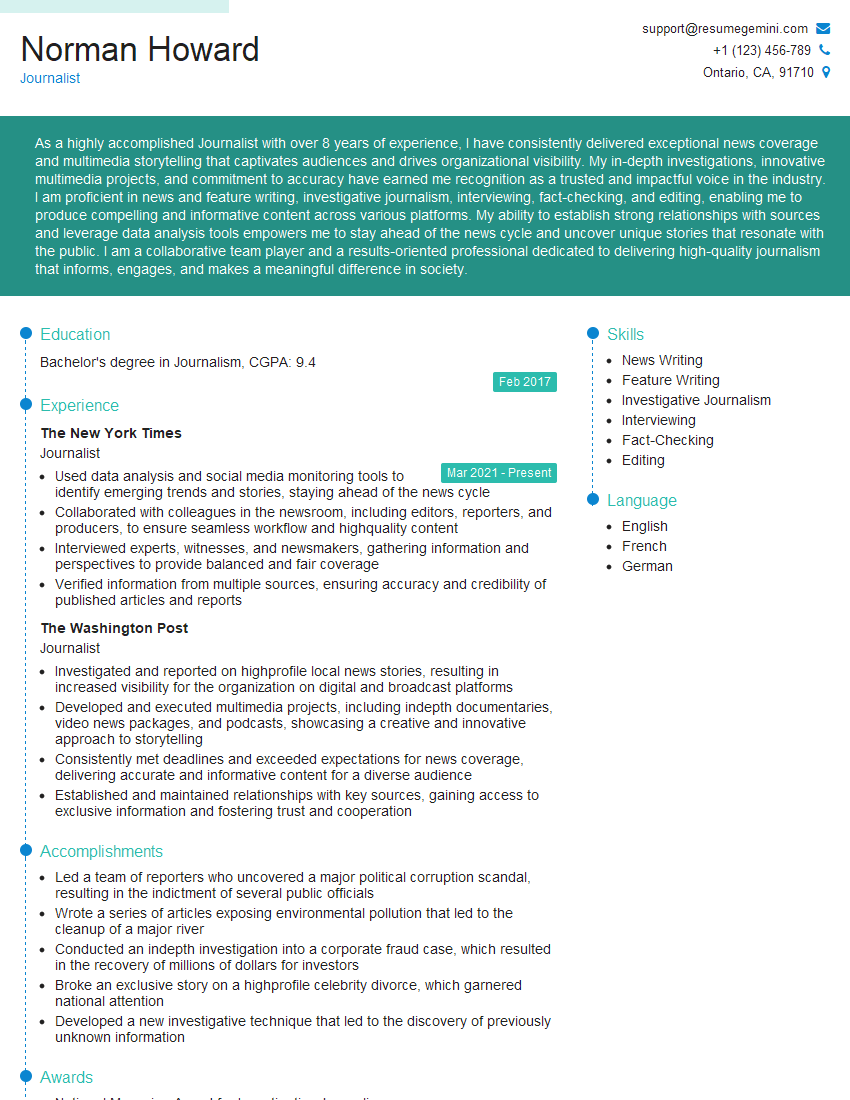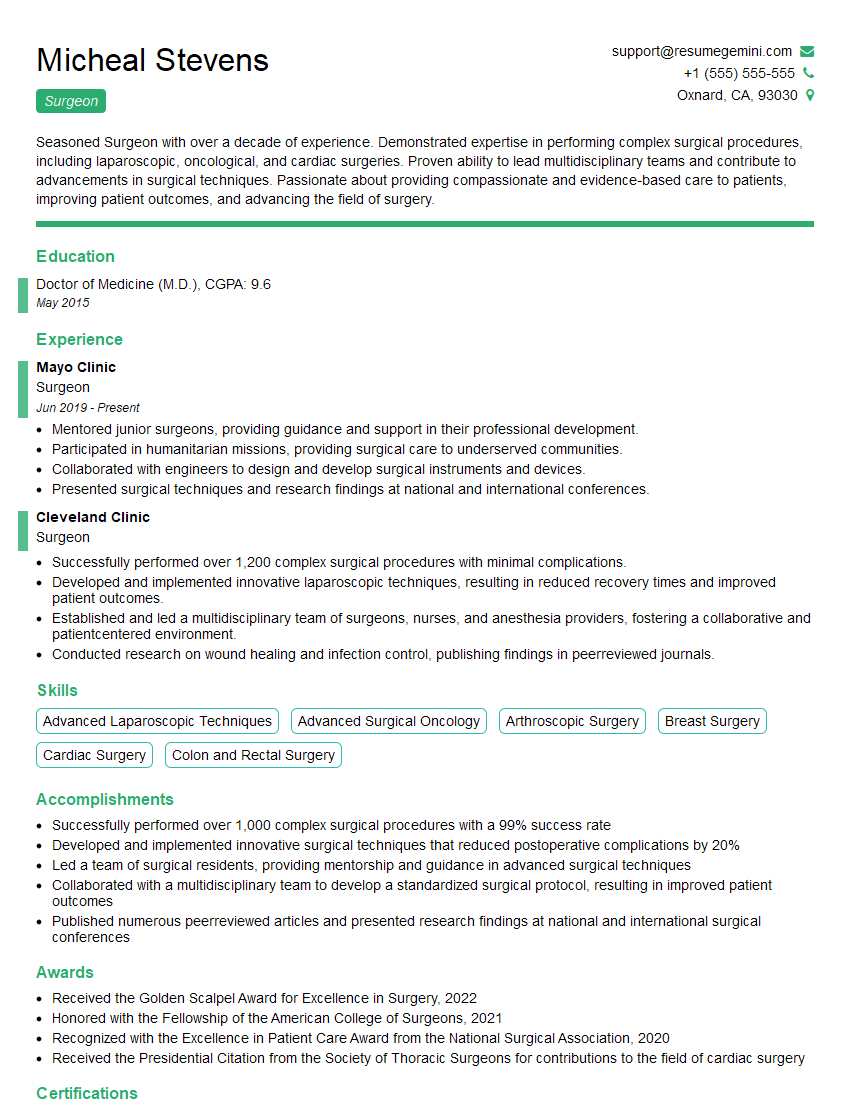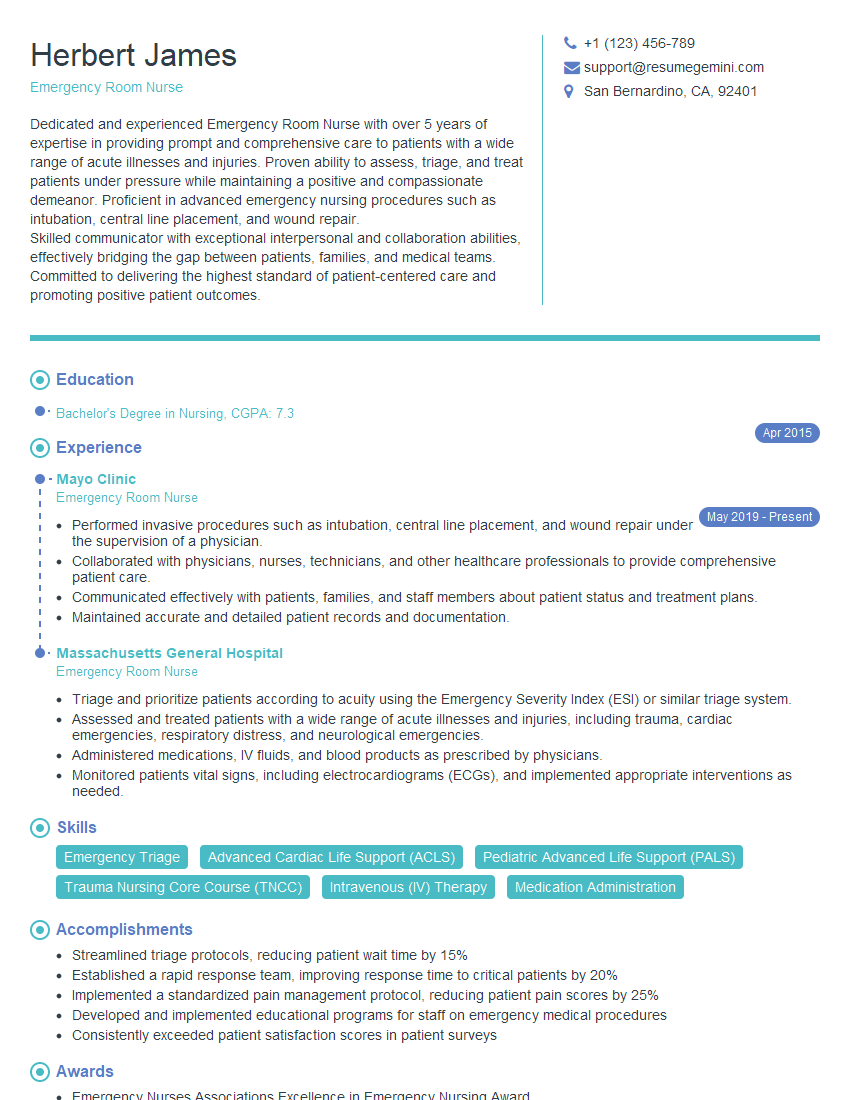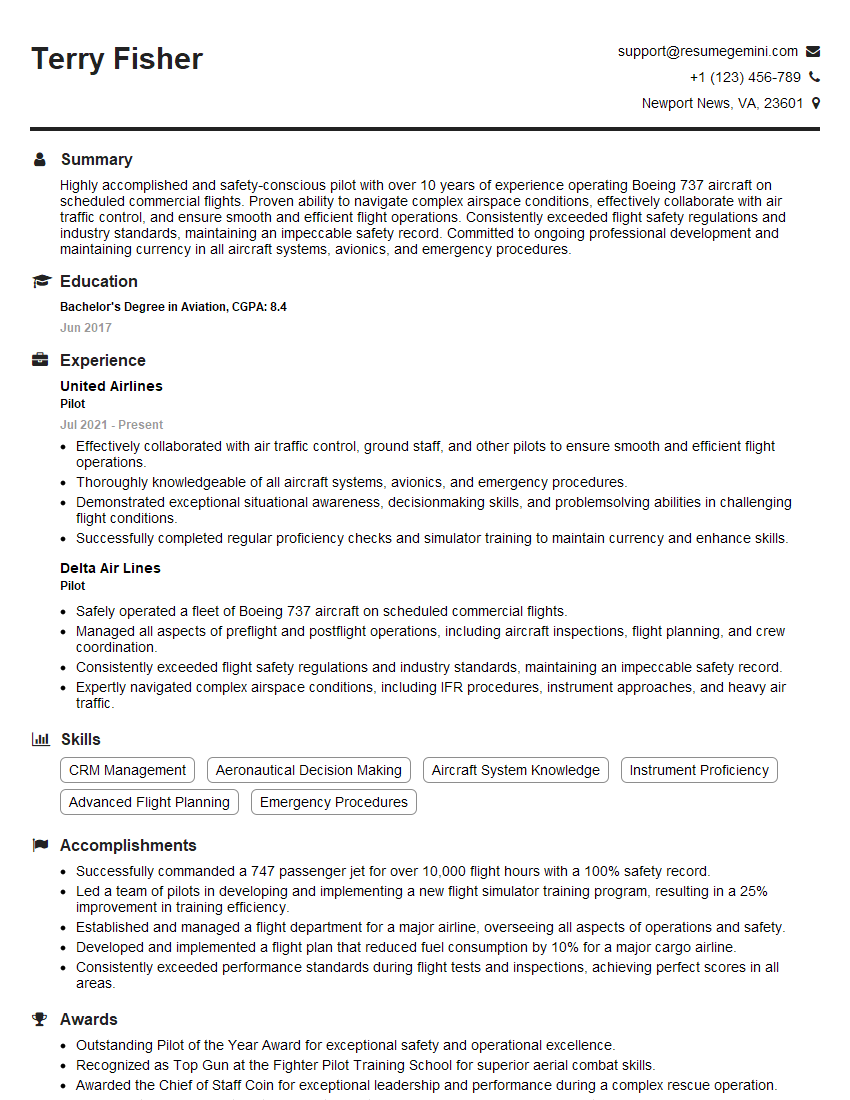Interviews are more than just a Q&A session—they’re a chance to prove your worth. This blog dives into essential Ability to perform under time constraints interview questions and expert tips to help you align your answers with what hiring managers are looking for. Start preparing to shine!
Questions Asked in Ability to perform under time constraints Interview
Q 1. Describe a situation where you had to complete a task under a tight deadline. What was your approach?
During my time at Acme Corporation, we faced a critical system outage that required immediate resolution. The deadline was incredibly tight – we needed the system back online within 4 hours to avoid significant financial losses. My approach involved several key steps. First, I initiated a rapid assessment of the problem, gathering information from the affected teams and identifying the root cause. We quickly diagnosed the issue as a database corruption. Next, I delegated tasks based on team members’ strengths: one team focused on restoring the database from backups, another investigated potential preventative measures, and a third prepared a communication plan for stakeholders. We used a Kanban board to track progress visually and identify any bottlenecks in real-time. Throughout the process, I fostered open communication, ensuring everyone was updated and understood their roles. Finally, we successfully restored the system within 3 hours and 45 minutes, preventing significant financial repercussions and proving my ability to perform under immense pressure.
Q 2. How do you prioritize tasks when facing multiple deadlines simultaneously?
Prioritizing tasks with multiple simultaneous deadlines requires a structured approach. I use a combination of methods, starting with a clear understanding of the urgency and impact of each task. I employ the Eisenhower Matrix (Urgent/Important), which helps categorize tasks into four quadrants: Do First (Urgent and Important), Schedule (Important but Not Urgent), Delegate (Urgent but Not Important), and Eliminate (Neither Urgent nor Important). This provides a clear framework for decision-making. Additionally, I utilize timeboxing, allocating specific time blocks for each task based on its priority and complexity. I regularly review and adjust my priorities as new information emerges or unforeseen circumstances arise. For instance, if a high-priority task unexpectedly expands in scope, I might need to re-evaluate my schedule and potentially adjust less critical deadlines, communicating proactively with stakeholders.
Q 3. What strategies do you employ to manage your time effectively in high-pressure environments?
Managing time effectively in high-pressure environments is a skill honed over time. I rely on several key strategies. First, I meticulously plan my day, outlining tasks and allocating specific time slots, considering potential unexpected delays. Second, I break down large tasks into smaller, manageable chunks to avoid feeling overwhelmed. Third, I employ the Pomodoro Technique, focusing intensely for 25 minutes followed by a 5-minute break, maintaining concentration and preventing burnout. Fourth, I utilize time-blocking techniques, dedicating specific time blocks to specific tasks. Finally, I constantly monitor my progress and make necessary adjustments to my schedule as needed. For example, if a task takes longer than anticipated, I may need to re-prioritize or ask for assistance. Consistent self-monitoring and adaptation are vital.
Q 4. Have you ever missed a deadline? If so, what happened and what did you learn?
Yes, I have missed a deadline once. It was during a particularly complex project with constantly shifting requirements. My initial planning underestimated the scope of the work, and I failed to proactively communicate the challenges. The result was a missed deadline, causing minor disruptions. The critical learning experience was the importance of proactive communication and accurate scope management. I now always prioritize clear communication about potential roadblocks early in the project lifecycle, allowing for adjustments and preventing similar situations in the future. I also implement more rigorous scope definition and risk management processes. This incident significantly improved my project management skills and highlighted the need for realistic expectations and open communication.
Q 5. How do you handle unexpected interruptions or changes in priorities when working under pressure?
Unexpected interruptions and changes in priorities are inevitable, especially in high-pressure environments. My approach is to remain calm and assess the situation rationally. First, I evaluate the impact of the interruption or change on my existing tasks and deadlines. If the interruption is critical, I address it immediately, re-prioritizing tasks accordingly. If it is less urgent, I may schedule it for later, using my time-management techniques to integrate it into my schedule without derailing ongoing projects. Clear and concise communication with stakeholders is crucial in these situations, keeping them informed of any adjustments to timelines or deliverables. For example, if a higher-priority task emerges, I would inform affected team members and adjust the project schedule accordingly, ensuring everyone is aware of the changes.
Q 6. Describe your process for breaking down large tasks into smaller, manageable steps.
Breaking down large tasks involves a structured approach. I begin by clearly defining the overall goal and desired outcome. Then, I identify the key sub-tasks required to achieve that goal. I further break these sub-tasks into smaller, more manageable steps, ensuring each step is clearly defined and actionable. I often use a work breakdown structure (WBS) diagram to visually represent these steps and their hierarchical relationships. This hierarchical approach makes it easy to track progress, identify potential bottlenecks, and delegate tasks effectively. For example, if the task is “Develop a new software module,” I might break it down into stages like “Requirements Gathering,” “Design,” “Coding,” “Testing,” and “Deployment,” with each stage further subdivided into smaller, more manageable tasks.
Q 7. How do you stay focused and avoid distractions when working against a tight deadline?
Maintaining focus under pressure requires discipline and proactive strategies. I create a dedicated workspace free from distractions, minimizing interruptions. I utilize noise-canceling headphones or background music to minimize environmental distractions. I also employ the Pomodoro Technique to maintain concentration during focused work periods. Taking regular breaks is crucial for preventing burnout and maintaining productivity. Additionally, I prioritize tasks based on urgency and importance, tackling the most demanding tasks during my peak concentration times. Regularly reviewing my to-do list and adjusting my schedule as needed helps maintain focus and track progress towards completing deadlines. Clear communication with colleagues, so they understand my need for uninterrupted time, is also essential.
Q 8. What techniques do you use to monitor your progress and ensure you stay on track?
Effective progress monitoring under time constraints requires a proactive and adaptable approach. I utilize a combination of techniques to ensure I stay on track. This includes breaking down large tasks into smaller, manageable chunks, setting realistic deadlines for each chunk, and regularly reviewing my progress against these deadlines.
- Timeboxing: Allocating specific time slots for tasks helps maintain focus and prevents tasks from expanding beyond their allocated time.
- Task Prioritization: Using methods like the Eisenhower Matrix (urgent/important) helps me focus on the most critical tasks first, maximizing my impact within limited time.
- Regular Check-ins: I schedule short, regular check-ins (e.g., at the end of each day or week) to review my progress, identify potential roadblocks, and adjust my plan as needed. This allows for course correction before problems escalate.
- Progress Tracking Tools: I leverage project management software (like Asana, Trello, or Jira) and time-tracking apps to visually monitor progress and identify areas needing attention. These tools provide a clear picture of what’s been completed, what’s in progress, and what’s upcoming.
For example, during a recent project with a tight deadline, I used a Kanban board to visually track the progress of each task. This allowed me and my team to quickly identify bottlenecks and re-allocate resources effectively.
Q 9. How do you delegate tasks effectively when time is limited?
Effective delegation under time pressure involves more than just assigning tasks; it requires careful consideration of individual strengths, clear communication, and ongoing monitoring. I prioritize clarity and trust in my delegation process.
- Clear Communication: I provide detailed instructions, outlining expectations, deadlines, and desired outcomes. This minimizes ambiguity and ensures everyone is on the same page.
- Matching Skills to Tasks: I identify team members with the appropriate skills and experience for each task. This ensures efficient execution and reduces the need for constant supervision.
- Empowerment & Trust: I empower delegated individuals to make decisions and take ownership of their tasks. This fosters responsibility and helps me focus on higher-priority items.
- Regular Check-ins: I schedule brief check-ins to monitor progress and offer support without micromanaging. This maintains accountability and allows for timely adjustments if needed.
For instance, during a product launch with a very short timeline, I delegated tasks based on team members’ expertise, ensuring everyone had a clear understanding of their responsibilities and the overall project goals. This streamlined the workflow and allowed us to meet the deadline successfully.
Q 10. How do you communicate effectively with stakeholders when working under pressure?
Effective communication under pressure requires a proactive, concise, and empathetic approach. I prioritize clear and frequent updates to ensure stakeholders are informed and engaged, even during periods of high stress.
- Proactive Updates: I regularly provide concise updates on progress, roadblocks, and potential solutions, tailoring my communication to the stakeholder’s level of technical understanding.
- Transparent Communication: I openly address challenges and potential delays, avoiding unnecessary jargon or technical details. Honesty builds trust and manages expectations.
- Active Listening: I prioritize active listening to address stakeholder concerns promptly and effectively. This helps to identify and resolve issues before they escalate.
- Choosing the Right Channel: I use the most appropriate communication channel, such as email for formal updates, instant messaging for quick queries, and video conferencing for more complex discussions.
In a recent project, I utilized daily stand-up meetings to provide quick updates to the project team and stakeholders, keeping everyone informed about progress and addressing any immediate concerns. This helped in maintaining transparency and prevented miscommunication.
Q 11. How do you handle stress and maintain composure in high-pressure situations?
Managing stress and maintaining composure under pressure involves a combination of proactive strategies and mindful techniques. I focus on maintaining a healthy work-life balance, practicing stress-reduction techniques, and adopting a positive mindset.
- Prioritization and Planning: Effective planning and task prioritization help prevent feeling overwhelmed. Breaking large tasks into smaller, manageable steps reduces stress.
- Mindfulness and Breathing Exercises: I utilize short mindfulness exercises and deep breathing techniques to center myself during stressful moments.
- Physical Activity and Healthy Lifestyle: Regular exercise, sufficient sleep, and a healthy diet significantly contribute to stress resilience.
- Time Management Techniques: Utilizing time management tools and techniques helps me stay organized and avoid last-minute rushes.
For example, during a particularly demanding project phase, I incorporated short meditation breaks into my workday to help manage stress and maintain focus. These breaks allowed me to return to my tasks refreshed and more productive.
Q 12. Describe a time you had to make a quick decision under pressure. What was the outcome?
During a system failure during a live event, I had to quickly assess the situation and decide on a course of action. The system’s primary database had failed, threatening a significant disruption to the ongoing event.
Decision: After a quick assessment, I decided to immediately switch to the secondary database, which involved a slight service interruption but prevented complete system failure. I also initiated an investigation into the cause of the primary database failure and communicated the status to all relevant stakeholders, setting expectations for recovery time.
Outcome: The swift decision to switch to the secondary database minimized disruption to the live event. Though there was a minor service interruption, the event continued without major incident. The post-incident investigation helped identify the cause, allowing for preventive measures to be implemented, reducing the likelihood of future occurrences.
Q 13. How do you balance speed and accuracy when working under time constraints?
Balancing speed and accuracy under pressure is crucial. It’s not about sacrificing one for the other, but about finding an optimal balance through careful planning, prioritizing, and self-awareness.
- Prioritization: Focusing on the most critical aspects first allows for more time to ensure accuracy where it matters most.
- Process Optimization: Streamlining workflows and leveraging automation where possible increases efficiency without compromising accuracy.
- Self-Awareness: Understanding my own tendencies to rush or be overly cautious helps me find my optimal pace and adjust accordingly.
- Quality Checks: Implementing strategic checkpoints during the process allows for early detection of errors and correction before significant time is wasted.
In a previous role, I was responsible for processing a high volume of data under a tight deadline. By prioritizing data validation steps and utilizing automated checks, I managed to maintain a high level of accuracy while meeting the time constraints. This prevented costly errors and ensured the integrity of the data.
Q 14. What tools or technologies do you use to improve your time management?
Several tools and technologies significantly improve my time management skills. I adapt my choices to the specific needs of a project and my personal preferences.
- Project Management Software: Tools like Asana, Trello, and Jira provide visual representations of tasks, deadlines, and progress, promoting effective organization and collaboration.
- Time Tracking Apps: Applications like Toggl Track or RescueTime help me understand where my time is going, identifying time-wasting activities and areas for improvement.
- Calendar Management: Effectively utilizing calendar applications for scheduling tasks and meetings minimizes scheduling conflicts and maximizes productivity.
- Note-Taking Apps: Applications like Evernote or OneNote allow for efficient note-taking, idea organization, and knowledge management, reducing time spent searching for information.
For example, during a complex project, I used Asana to track tasks and deadlines. This allowed me and my team to visualize progress, identify potential delays, and collaboratively adjust timelines as needed, resulting in efficient project completion.
Q 15. Describe your experience working in a fast-paced environment.
My experience in fast-paced environments is extensive. For instance, during my time at [Previous Company Name], we regularly launched new products with incredibly tight deadlines. This involved coordinating with multiple teams – design, engineering, marketing – often under pressure to meet aggressive launch dates. I thrived in this environment by focusing on clear communication, prioritization, and efficient task management. It’s not just about speed, but about strategic speed; understanding which tasks are critical and delegating or streamlining where possible.
Another example involved a project where a major client requested an urgent change just days before a crucial presentation. This demanded a rapid shift in priorities, requiring me to quickly re-evaluate the project timeline, delegate tasks efficiently, and maintain clear communication with all stakeholders to ensure a smooth transition and successful delivery despite the unexpected turn of events.
Career Expert Tips:
- Ace those interviews! Prepare effectively by reviewing the Top 50 Most Common Interview Questions on ResumeGemini.
- Navigate your job search with confidence! Explore a wide range of Career Tips on ResumeGemini. Learn about common challenges and recommendations to overcome them.
- Craft the perfect resume! Master the Art of Resume Writing with ResumeGemini’s guide. Showcase your unique qualifications and achievements effectively.
- Don’t miss out on holiday savings! Build your dream resume with ResumeGemini’s ATS optimized templates.
Q 16. How do you identify and mitigate potential risks that could impact your ability to meet deadlines?
Identifying and mitigating risks that could impact deadlines involves a proactive, multi-step approach. First, I conduct a thorough risk assessment during the initial project planning phase. This involves identifying potential bottlenecks (e.g., resource constraints, dependency on external factors, unforeseen technical challenges).
- Risk Identification: I use techniques like brainstorming and SWOT analysis to pinpoint potential problems. For example, if a key team member is going on vacation during a critical phase, that’s a potential risk.
- Mitigation Planning: For each identified risk, I develop a mitigation strategy. This could involve securing backup resources, building buffer time into the schedule, or developing contingency plans.
- Monitoring and Adjustment: Throughout the project, I continuously monitor progress and assess risks. If a risk materializes, I immediately implement the mitigation plan or develop a new one as needed.
For instance, in a previous project, I anticipated potential delays due to third-party API integration. To mitigate this, I built in extra time for testing and secured a secondary API provider as a backup. This foresight prevented significant delays when the primary API encountered unexpected issues.
Q 17. How do you adapt your approach when faced with unexpected challenges or obstacles?
Adaptability is crucial under pressure. My approach involves a combination of flexibility, problem-solving, and communication. When faced with unexpected challenges, my first step is to assess the situation calmly and objectively.
- Problem Definition: Clearly define the nature and scope of the challenge. What exactly is the obstacle, and how is it impacting the project?
- Solution Brainstorming: Generate multiple potential solutions, evaluating their feasibility and potential impact on the project timeline and quality.
- Decision Making: Select the most effective solution, considering available resources and constraints.
- Communication: Keep all stakeholders informed about the challenge and the chosen solution. Transparency prevents misunderstandings and maintains trust.
For example, a server outage once threatened to derail a critical deadline. I immediately contacted the IT team, informed stakeholders, and explored alternative solutions like using a backup server or temporarily shifting to a different platform. This quick response minimized downtime and ensured the project stayed on track.
Q 18. How do you handle conflicting priorities when working under pressure?
Handling conflicting priorities under pressure requires a structured approach. I prioritize tasks using a system that considers urgency, importance, and impact. The Eisenhower Matrix (urgent/important) is a valuable tool here.
- Prioritization Matrix: Categorize tasks based on urgency and importance. Focus on high-impact, urgent tasks first. Delegate or defer less critical items.
- Time Blocking: Allocate specific time slots for each task. This helps prevent task-switching and improves focus.
- Communication: Openly communicate with stakeholders about the prioritization decisions. Explain trade-offs and manage expectations effectively.
Imagine a scenario where I need to complete a crucial report while also addressing a client’s urgent request. Using the Eisenhower Matrix, I’d prioritize the report if it’s a higher-impact item and communicate to the client about a slightly adjusted timeline for their request, outlining my plan to deliver on both.
Q 19. How do you ensure the quality of your work when working against tight deadlines?
Maintaining quality under pressure requires a deliberate focus on process and efficiency. It’s not about sacrificing quality for speed; it’s about working *smartly*.
- Prioritized Testing: Focus testing efforts on critical features and functionalities.
- Automated Testing: Utilize automated tests where possible to expedite the testing process and catch errors early.
- Code Reviews: Implement peer code reviews to catch bugs and ensure code quality.
- Agile Methodology: Employ iterative development and frequent feedback loops to address issues quickly.
In a past project, we implemented automated unit tests for critical functionalities, which allowed us to quickly identify and fix bugs early in the development cycle. This approach significantly reduced the time spent on debugging during the final stages, while maintaining high code quality.
Q 20. How do you proactively identify potential time constraints before starting a project?
Proactive identification of potential time constraints begins with meticulous project planning. I employ several strategies to anticipate potential bottlenecks before starting a project.
- Detailed Task Breakdown: A granular task breakdown helps reveal hidden complexities and dependencies.
- Realistic Time Estimation: Avoid overly optimistic estimations. Factor in potential delays and unforeseen circumstances.
- Resource Allocation: Assess resource availability (personnel, tools, technology). Identify potential conflicts or limitations.
- Dependency Analysis: Analyze dependencies between tasks. Identify potential bottlenecks caused by sequential tasks.
For example, if I’m designing a website, I would break down the project into smaller tasks (design mockups, develop front-end, develop back-end, testing, deployment). This allows for a more accurate time estimation and identification of potential dependencies between design and development. Early identification of any potential resource constraints, like a shortage of designers, allows for proactive solutions.
Q 21. What steps do you take to prevent burnout when working long hours to meet deadlines?
Preventing burnout when working long hours requires a conscious effort to prioritize self-care and maintain a healthy work-life balance. This isn’t a luxury; it’s essential for sustained productivity and overall well-being.
- Time Management: Prioritize tasks, delegate where possible, and avoid multitasking to improve efficiency.
- Regular Breaks: Take short breaks throughout the day to rest and recharge. Step away from your workstation and avoid continuous screen time.
- Healthy Diet and Exercise: Maintain a balanced diet and incorporate regular physical activity. Even a short walk can significantly improve focus and energy levels.
- Sufficient Sleep: Prioritize adequate sleep to support cognitive function and prevent burnout.
- Mindfulness and Stress Management: Practice mindfulness techniques like meditation or deep breathing to manage stress levels.
I personally find that even a 15-minute walk during lunch, or a few minutes of meditation before starting my day, makes a significant difference in my ability to focus and avoid feeling overwhelmed. It’s about making small, consistent changes that add up to a big impact on my well-being and productivity.
Q 22. Can you give an example of a time you successfully navigated competing deadlines?
Successfully navigating competing deadlines requires a strategic approach combining prioritization, time management, and effective communication. It’s like a conductor leading an orchestra – each instrument (task) has its own part, but they must all harmonize to create a beautiful piece (project).
In a previous role, I was managing the launch of a new software product while simultaneously overseeing the final stages of a major client project. Both had aggressive deadlines, just one week apart. My approach involved:
- Prioritization Matrix: I used an Eisenhower Matrix (urgent/important) to categorize tasks from both projects. This clarified which tasks needed immediate attention and which could be delegated or slightly delayed.
- Time Blocking: I dedicated specific time blocks in my day to each project, preventing task-switching and maintaining focus. For example, mornings were dedicated to the software launch, and afternoons to the client project.
- Communication: I proactively communicated with both teams, setting clear expectations and keeping them updated on any potential roadblocks. This ensured everyone was aligned and working towards the same goals.
By strategically allocating my time and resources, I successfully launched the software product on time and exceeded client expectations on the other project.
Q 23. How do you handle criticism or feedback when you’re working under a lot of pressure?
Handling criticism under pressure requires a calm and receptive attitude. It’s about separating the emotion from the feedback and focusing on the message. Think of it like a mechanic receiving feedback on a faulty engine; they don’t take it personally, they diagnose and fix the problem.
My approach involves:
- Active Listening: I listen carefully without interrupting, ensuring I understand the critique fully before responding.
- Seeking Clarification: If something is unclear, I ask clarifying questions to understand the feedback’s context and intent.
- Focusing on Solutions: I avoid getting defensive and instead focus on how I can improve or implement the suggestions. Even constructive criticism can be difficult; maintaining a professional and respectful demeanor is key.
- Documenting Feedback: I keep a record of the feedback received, using it as a learning opportunity to improve my future performance.
By approaching criticism constructively, I turn what could be a stressful situation into a chance for growth and improvement.
Q 24. How do you plan for potential delays or unexpected issues that might impact your timeline?
Planning for potential delays and unexpected issues is crucial for successful project management under time constraints. This is like a captain navigating a ship through a storm; they need a plan B, C, and even D.
My strategy typically involves:
- Risk Assessment: I identify potential risks and challenges early in the project. This could be anything from technical glitches to resource constraints.
- Contingency Planning: For each identified risk, I develop a contingency plan – a backup strategy to mitigate the impact of the delay or issue.
- Buffer Time: I incorporate buffer time into my schedule, allowing for unexpected delays or setbacks. This buffer acts as a safety net.
- Regular Monitoring: I consistently track progress and actively monitor for any signs of deviation from the plan. Early detection allows for prompt corrective actions.
- Agile Methodology: Embracing agile methodologies allows for flexibility and adaptation to change, making it easier to adjust to unexpected issues.
This proactive approach ensures I’m prepared for the unexpected and can maintain project momentum even in the face of adversity.
Q 25. How do you assess your own performance under pressure?
Assessing performance under pressure involves both objective and subjective measures. Think of it as a sports coach analyzing game film: they look at both stats (objective) and player performance (subjective).
My approach includes:
- Self-Reflection: I take time after a high-pressure situation to reflect on my performance. What went well? What could I have done better?
- Objective Metrics: I analyze objective data, such as project completion time, quality of deliverables, and adherence to budget. This provides a quantifiable measure of my performance.
- Feedback Collection: I seek feedback from colleagues, managers, and clients to gain a diverse perspective on my performance.
- Strengths and Weaknesses Analysis: I identify my strengths and weaknesses under pressure and develop strategies to improve my performance in areas that need work.
This multi-faceted approach gives me a comprehensive understanding of my performance and guides future improvements.
Q 26. What are your preferred methods for tracking progress and managing your workload?
Effective progress tracking and workload management are vital for success under pressure. Think of it as a pilot using navigation tools; they need to know their location and destination to make informed decisions.
My preferred methods include:
- Project Management Software: I utilize tools like Jira, Asana, or Trello to track tasks, deadlines, and progress visually. These tools offer customizable dashboards and reporting features.
- Prioritization Techniques: I use techniques like the Eisenhower Matrix or MoSCoW method (Must have, Should have, Could have, Won’t have) to prioritize tasks based on urgency and importance.
- Time Tracking: I track my time spent on different tasks to identify time sinks and improve efficiency. This can be done manually or with time tracking software.
- Regular Reviews: I schedule regular reviews (daily or weekly) to assess progress, identify roadblocks, and adjust my plans as needed.
By combining these methods, I gain a clear picture of my workload and can make informed decisions to ensure effective progress toward my goals.
Q 27. Describe a time you had to make a difficult decision under time pressure. What were the considerations?
Difficult decisions under time pressure require quick thinking, clear judgment, and a willingness to accept calculated risks. It’s like a firefighter making split-second decisions during an emergency; accuracy and efficiency are paramount.
In one instance, I had to decide whether to launch a marketing campaign with some minor but fixable bugs or delay it to ensure perfection. My considerations included:
- Risk Assessment: I assessed the risks of launching with the minor bugs versus delaying and the potential impact on revenue and brand reputation.
- Prioritization: I prioritized the bugs based on their severity and impact on the user experience.
- Communication: I communicated with the development team and stakeholders to outline the options and their potential implications.
- Decision: I decided to launch with a plan to quickly address the minor bugs, based on the potential cost of a delayed campaign outweighing the risk of launching with the minor fixes. This was a calculated risk.
The campaign was successful, and the bugs were quickly resolved, validating my decision-making process under pressure.
Q 28. How would you handle a situation where a critical piece of information is missing near a deadline?
Missing critical information near a deadline can be extremely challenging. It’s like a chef missing a key ingredient right before serving; quick thinking and resourcefulness are essential.
My approach would involve:
- Identify the Gap: First, I’d pinpoint precisely what information is missing and its impact on the project.
- Explore Sources: I’d immediately explore all potential sources of the missing information, including colleagues, documentation, databases, and external resources.
- Estimate Impact: I’d assess the likely impact of the missing information on the final product or deliverable. Can I reasonably proceed without it, or does it need urgent resolution?
- Proactive Communication: I’d communicate the situation to the relevant stakeholders to collaboratively determine the best course of action, exploring potential solutions like using alternative data sources or adjusting the scope of work.
- Risk Mitigation: If the missing information is irretrievable in the short term, I’d implement contingency plans to minimize the impact on the deadline.
The key is to remain calm, proactive, and communicative to effectively navigate this stressful situation.
Key Topics to Learn for Ability to Perform Under Time Constraints Interview
- Prioritization and Task Management: Learn effective techniques for prioritizing tasks based on urgency and importance, utilizing tools like Eisenhower Matrix or time blocking strategies. Understand how to delegate effectively when appropriate.
- Stress Management and Focus: Explore strategies for managing stress and maintaining focus under pressure. This includes mindfulness techniques, deep breathing exercises, and recognizing personal triggers for anxiety.
- Time Estimation and Planning: Develop the skill of accurately estimating the time required for tasks. Practice breaking down large projects into smaller, manageable chunks with realistic timelines. Learn to adjust plans based on unforeseen circumstances.
- Decision-Making Under Pressure: Practice making quick, informed decisions without compromising quality. Understand the trade-offs involved in rapid decision-making and develop strategies to mitigate risks.
- Adaptability and Flexibility: Highlight your ability to adapt to changing priorities and unexpected challenges. Demonstrate flexibility in your approach to problem-solving and your willingness to adjust your plans as needed.
- Communication and Collaboration: Discuss your experience in communicating effectively under time pressure, including clear and concise updates to stakeholders and effective collaboration with team members.
Next Steps
Mastering the ability to perform under time constraints is crucial for career advancement. It demonstrates valuable skills employers highly value, leading to increased opportunities and promotions. To maximize your job prospects, create an ATS-friendly resume that clearly highlights your achievements and skills in this area. ResumeGemini is a trusted resource to help you build a professional, impactful resume that showcases your capabilities. We provide examples of resumes tailored to highlight “Ability to perform under time constraints,” allowing you to see successful implementations and adapt them to your own experience.
Explore more articles
Users Rating of Our Blogs
Share Your Experience
We value your feedback! Please rate our content and share your thoughts (optional).
What Readers Say About Our Blog
Hi, I represent an SEO company that specialises in getting you AI citations and higher rankings on Google. I’d like to offer you a 100% free SEO audit for your website. Would you be interested?
good








